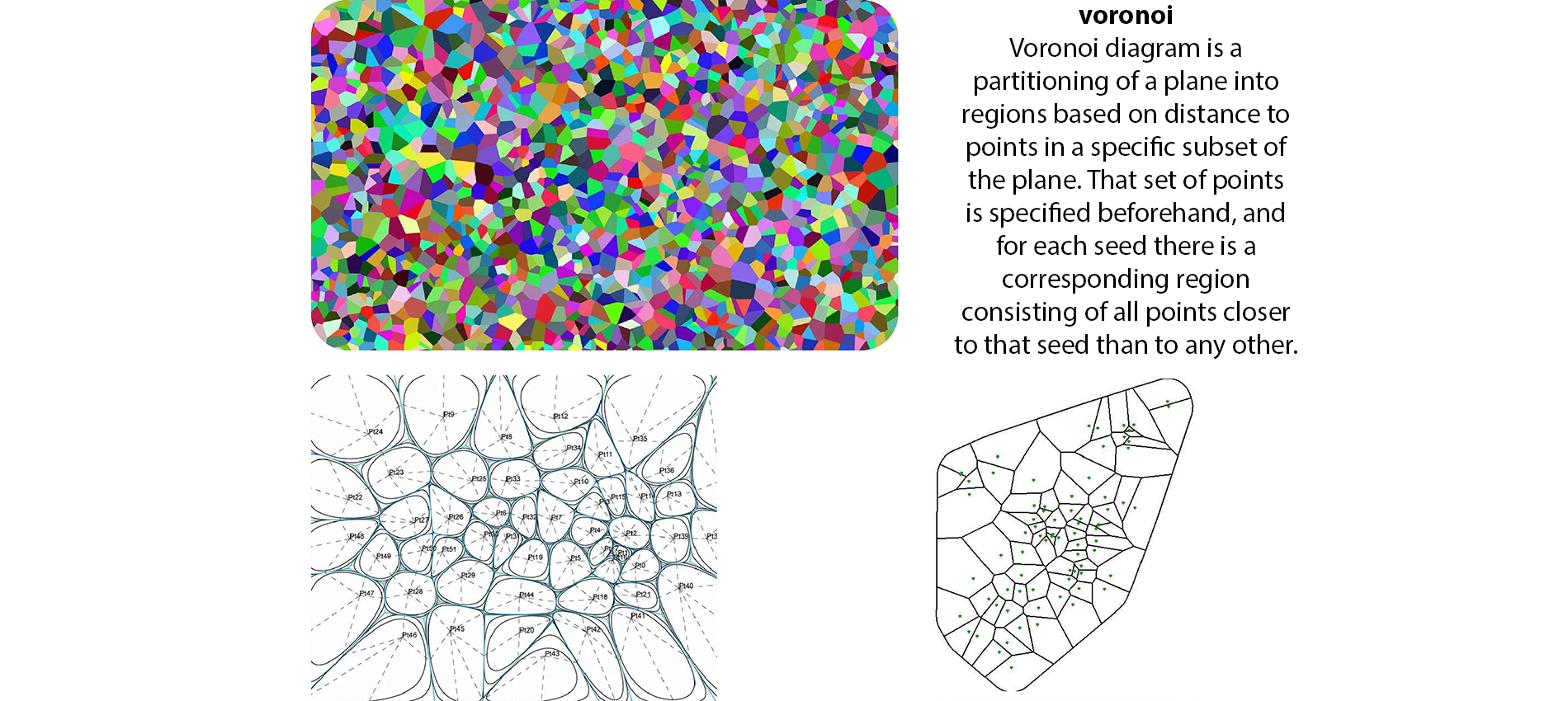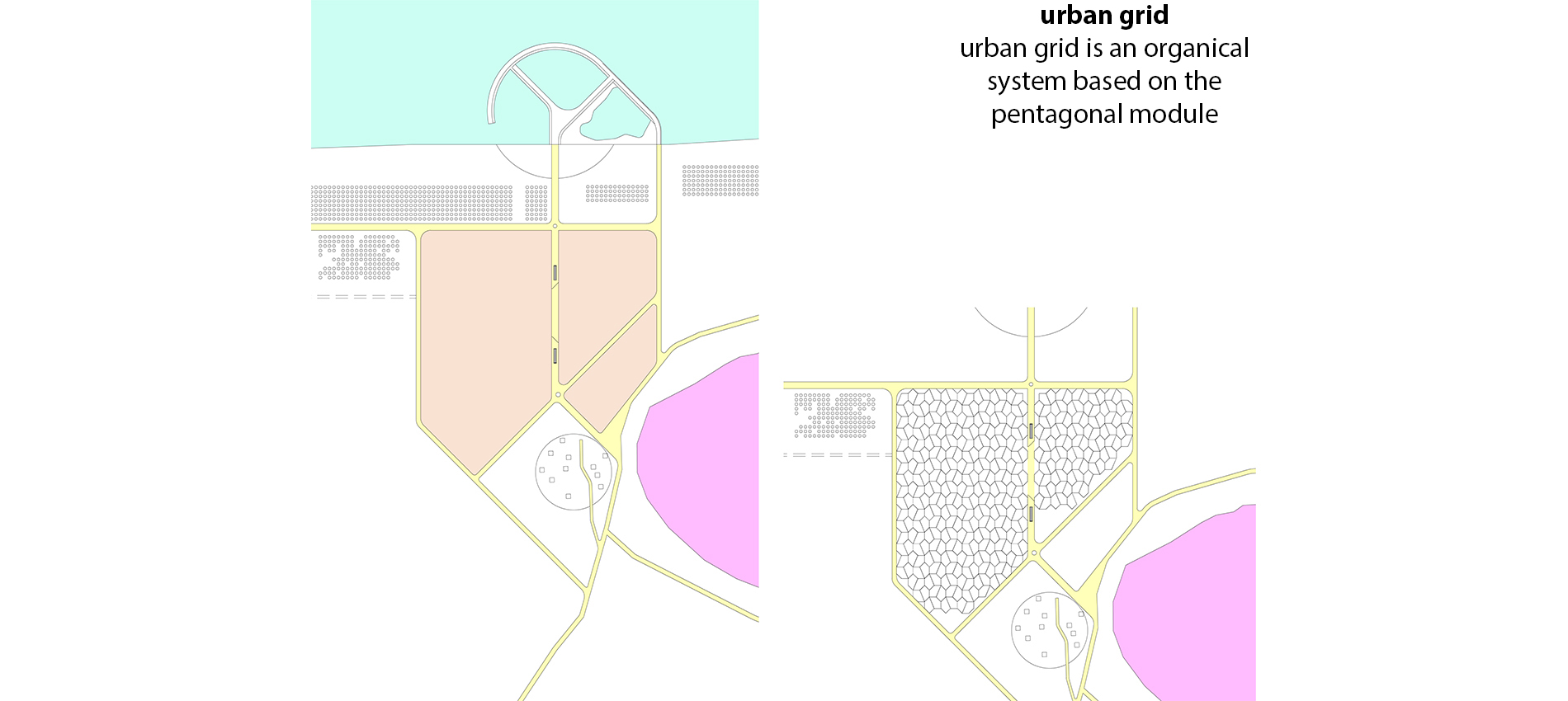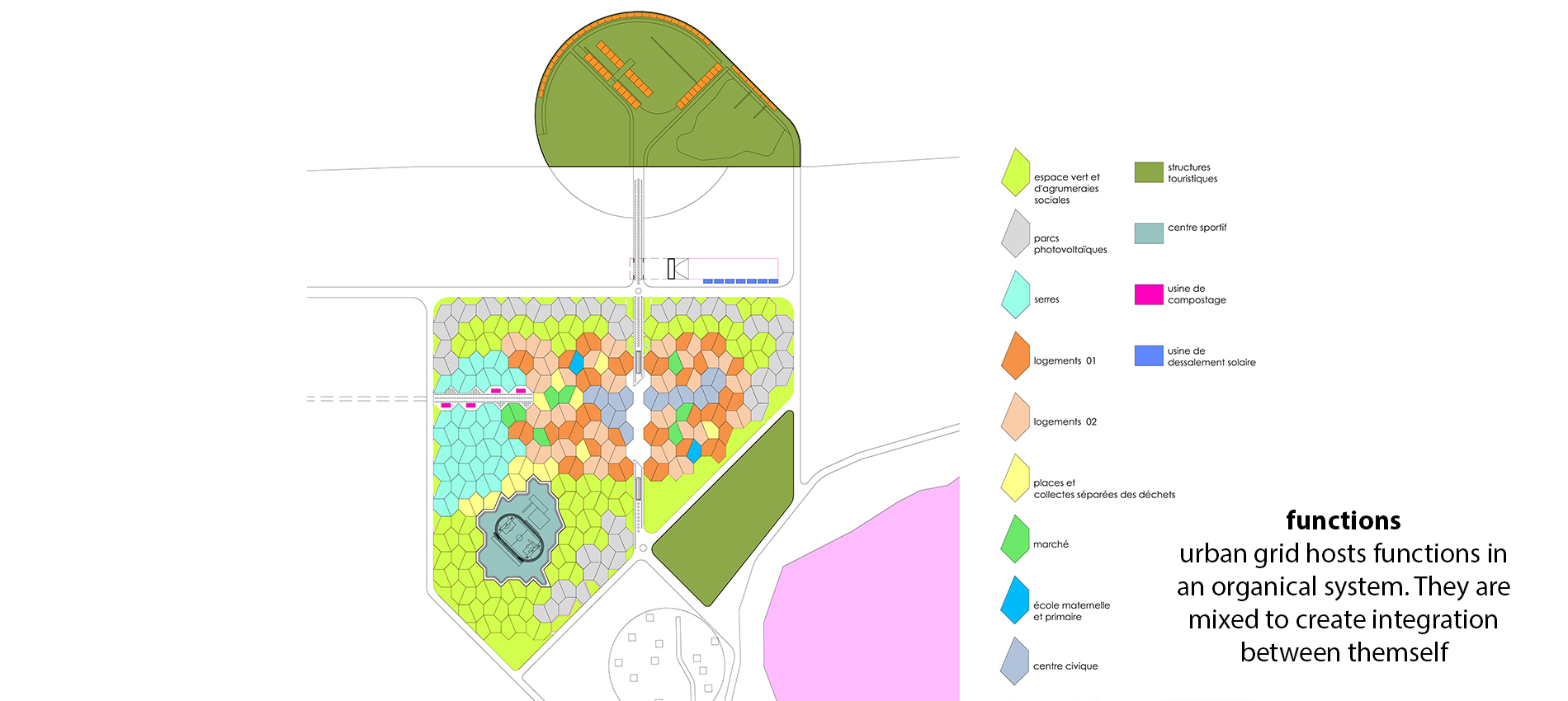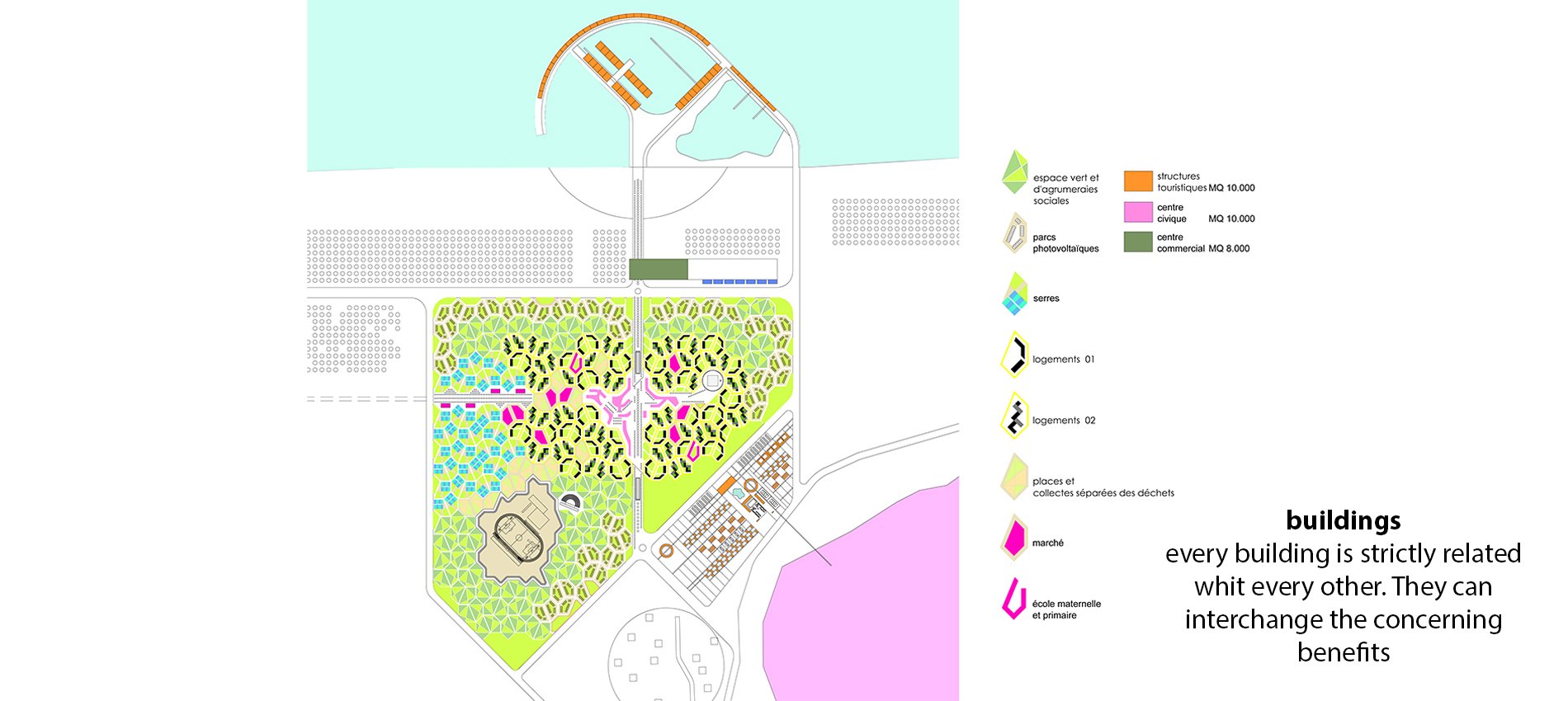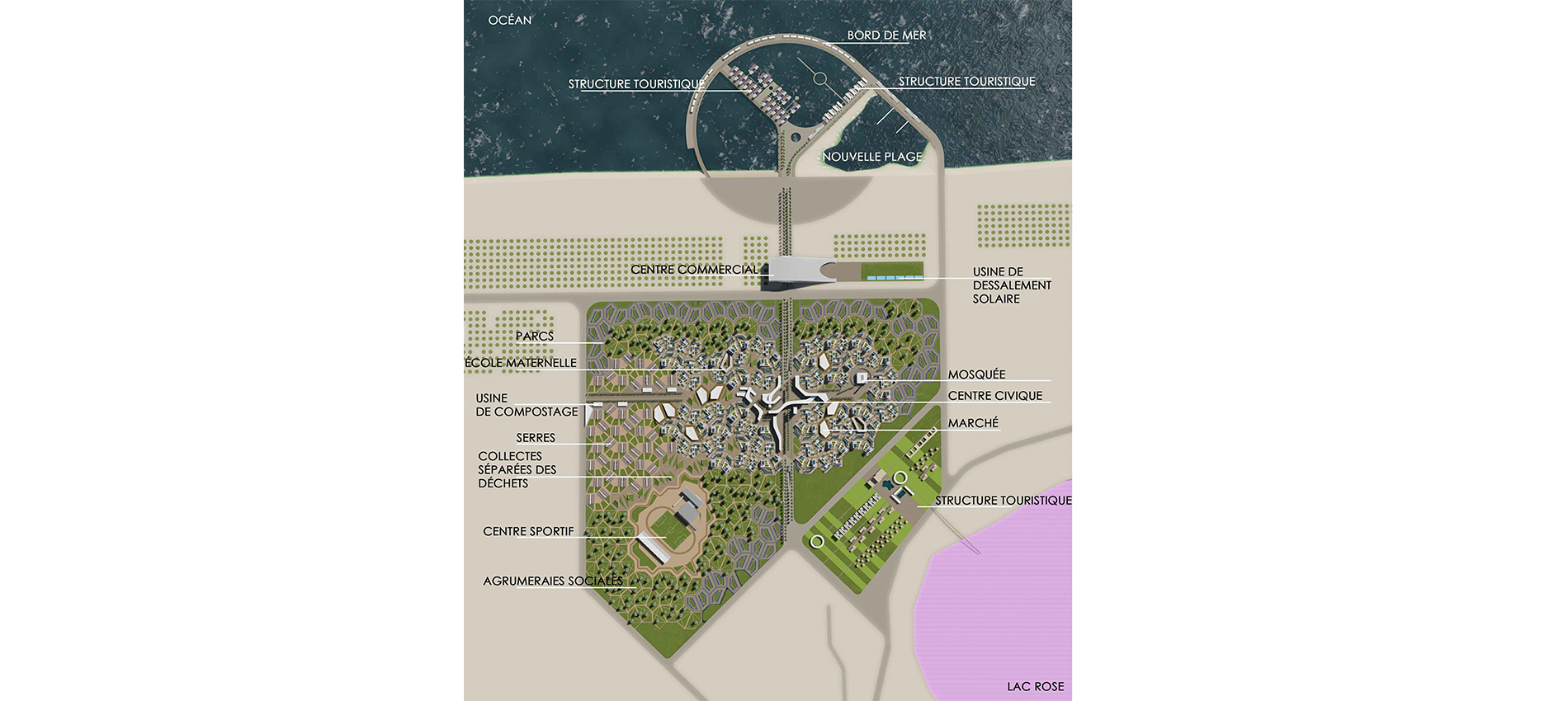2014 NEW VILLAGE DAKAR
2014 NEW VILLAGE DAKAR
This project drafted for the central government of Senegal, on direct order of President Maki Sal, “imagines” a small village in the north of Dakar, in this case near Diamnadio, twenty kilometers from the capital center, overlooking the shores of the extraordinary Lac Rose (the lake so named for the pink color of the water, caused by the mixture of a particular type of salt and a little common species of seaweed).
The environment is not the easiest, because still in subsaharian Africa with many problems, first of all, the shortage of water; the northerly winds sweep across the desert from Mauritania making hard many kinds of crops and also the ocean on this coastal strip is not protected as in the south of Dakar, so each settlement is possible if it finds a way to efendi itself from the sea.
The project is based on four fundamental principles:
1-
a grid of “alternative” groundwork to the traditional castrum, composed by a tiling of irregular pentagons, was imagined in order to soften the impact of a new urban system on a practically virgin territory, in addition to support the structure of traditional African tribal village of western subsaharian Africa, based on a non-hierarchy of the spaces, except for the huts of the headman and spiritual guidance.
It is interesting to note how the experiment done using a regular grid but totally different from the Hippodamus type, can offer possibilities and ideas completely new; the functions are integrated to each other in a better way and being pretty much wedge in to each other; each block always benefits of different perspectives that look forward the
neighbour’ s house in a discreet way but enough to appreciate each house and every building as if it was an ” unicum “.
2-
The energy autonomy is another important objective, where the exploitation of the enormous solar radiation is exploited by each house with a rate of a big photovoltaic plant of 16,000 MWh able to power the 70% of the annual requirement of entire village.
3-
Agriculture in the city has the purpose to restore the traditional senegalese crops, disappeared during the colonial period. For this reason are provided for the project about 10,000 square meters of greenhouses (with a semitransparent photovoltaic roof), whre are placed some collective vegetable gardens which, if used in a good way, can satisfy the 50% need of the population of village.
4-
The water supply was imagined by referring to an innovative method, developed by the Polytechnic of Milan, for the desalination of sea water. This system is based on condensation rooms, where the water is obtained more quickly by using simple fans (which speed up the evaporation phenomenon), whose energy consumption is much contained.



